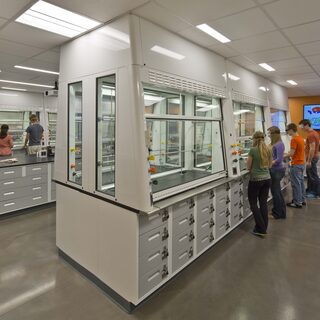Tradeline's industry reports are a must-read resource for those involved in facilities planning and management. Reports include management case studies, current and in-depth project profiles, and editorials on the latest facilities management issues.
Latest Reports
Kline Chemistry Laboratory
A gut renovation of the Kline Chemistry Laboratory has created a highly energy-efficient facility, with open work spaces and more than 60 high-performance fume hoods, the highest density of any building on campus. Renovation of the three-story building entailed replacement of all building systems and finishes, new core additions and exterior glazing, as well as life safety upgrades.
Extending the Long-Term Viability of Animal Facilities
Flexible room configurations, durable finishes and equipment, and highly sensitive airflow control and monitoring can extend the sustainable life of animal facilities and vivaria, where the research and biosecurity needs can change repeatedly over the course of several years. Detailed upfront planning and mockups of proposed spaces contribute to the long-term success and flexibility of these facilities.
Organic Chemistry Lab
A gut renovation of the 1984 organic chemistry lab in the Physical Sciences Building at Bowling Green State University created state-of-the-art teaching environments with $250,000 worth of new instrumentation, casework, stainless steel ductwork, and computer-controlled supply systems. The installation of 12 lab hoods and one ADA-compliant hood, with high-efficiency exhaust and airflow systems, offer students more hands-on, project-based learning opportunities in a safer environment.
Using Color and Light to Improve Workplace Performance and Productivity
Color is the first thing your brain experiences in any environment, because the optic nerve connects the human eye directly to the cerebral cortex. Color has a deep subconscious influence on emotions, and studies have linked positive emotional states to improved decision-making, better memory function, greater job satisfaction, and creative problem solving. As a result, space planners are looking more than ever at how interior design colors influence mood and productivity in offices, labs, and classrooms.
James Center for Molecular and Life Sciences
The 55,000-sf James Center for Molecular and Life Sciences at Eckerd College houses biology, chemistry, and biochemistry departments under one roof for the first time, with biology and chemistry offices interspersed to foster interdisciplinary collaboration. The building contains nine 24-student teaching labs, two classrooms, four faculty-student research spaces, and 14 faculty offices.





